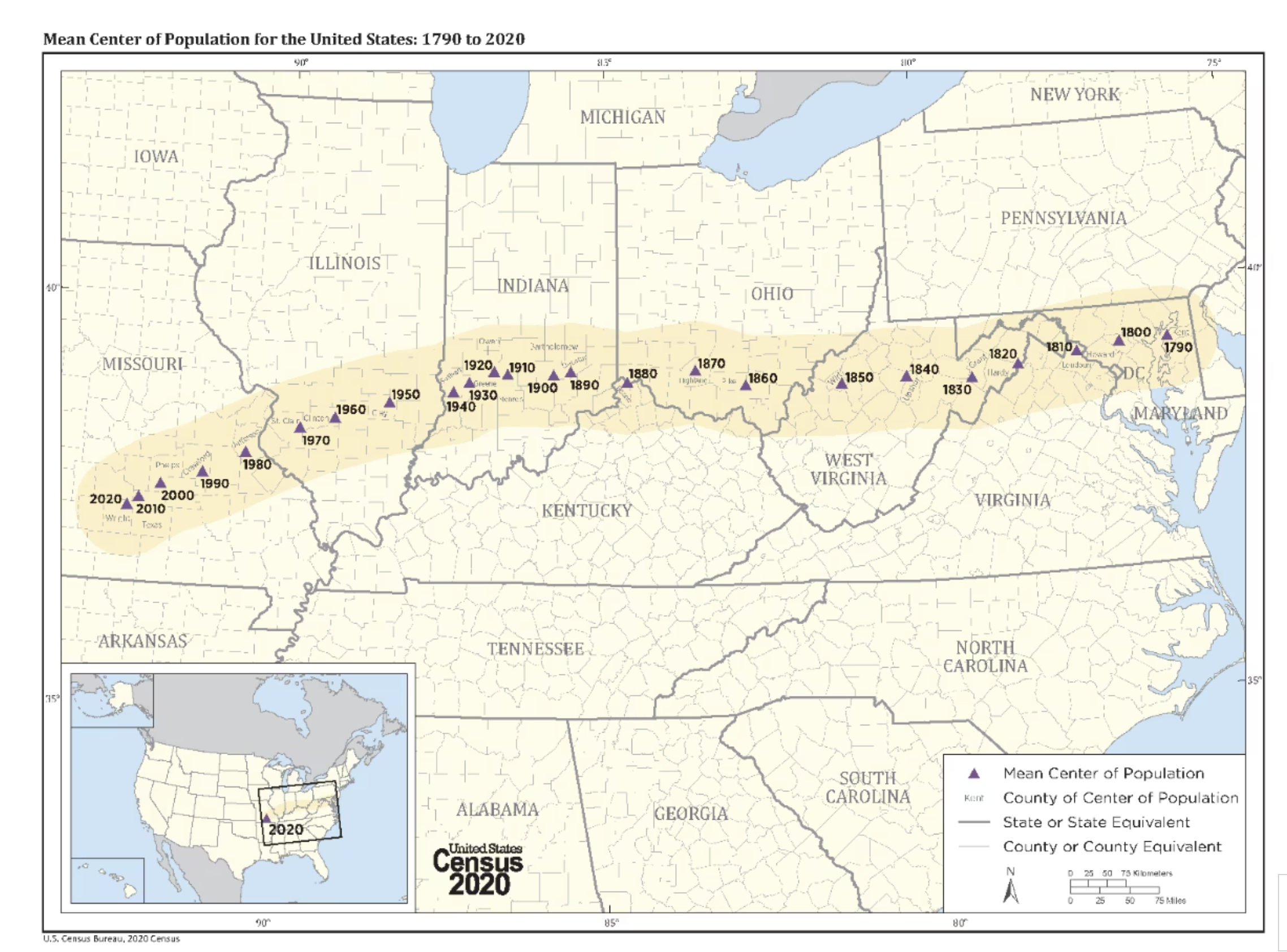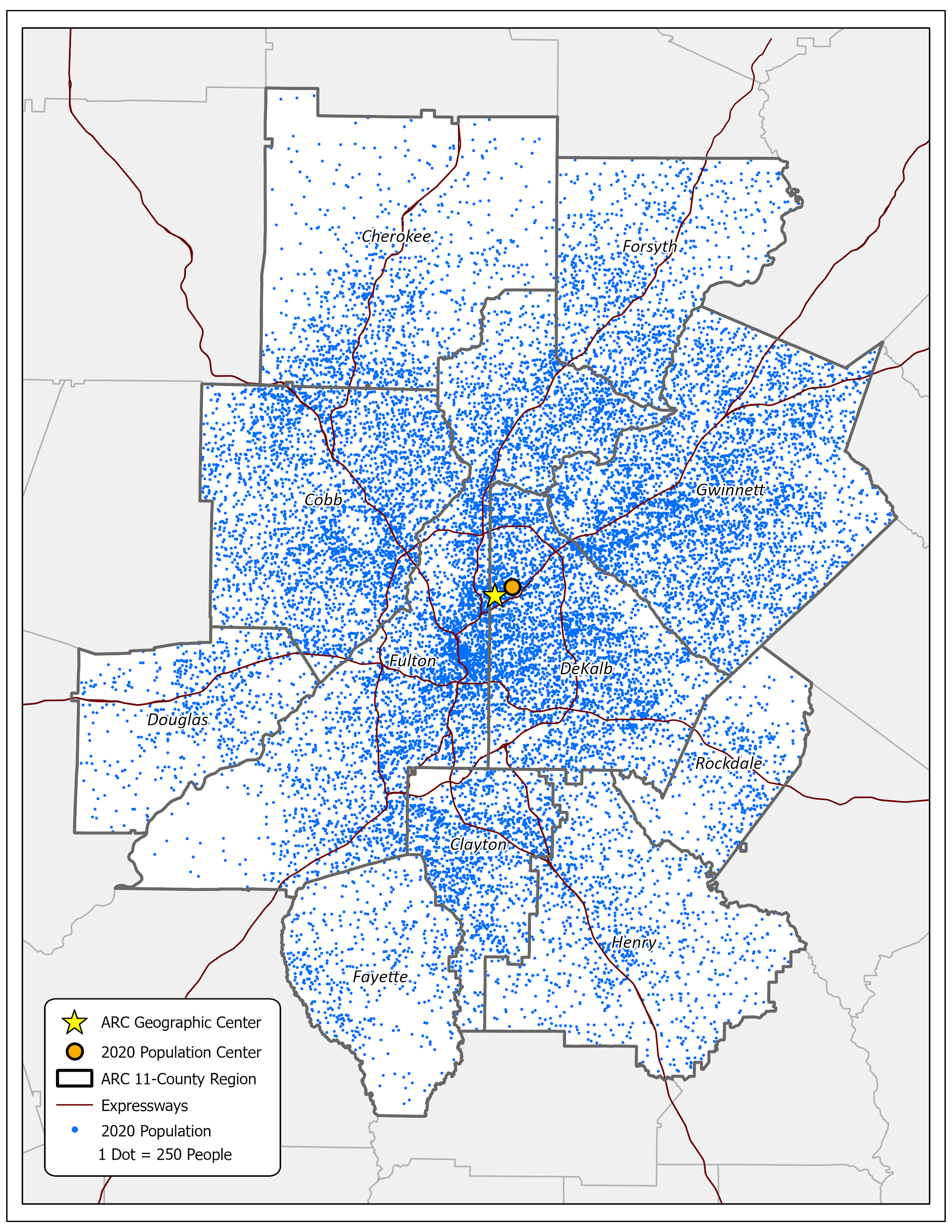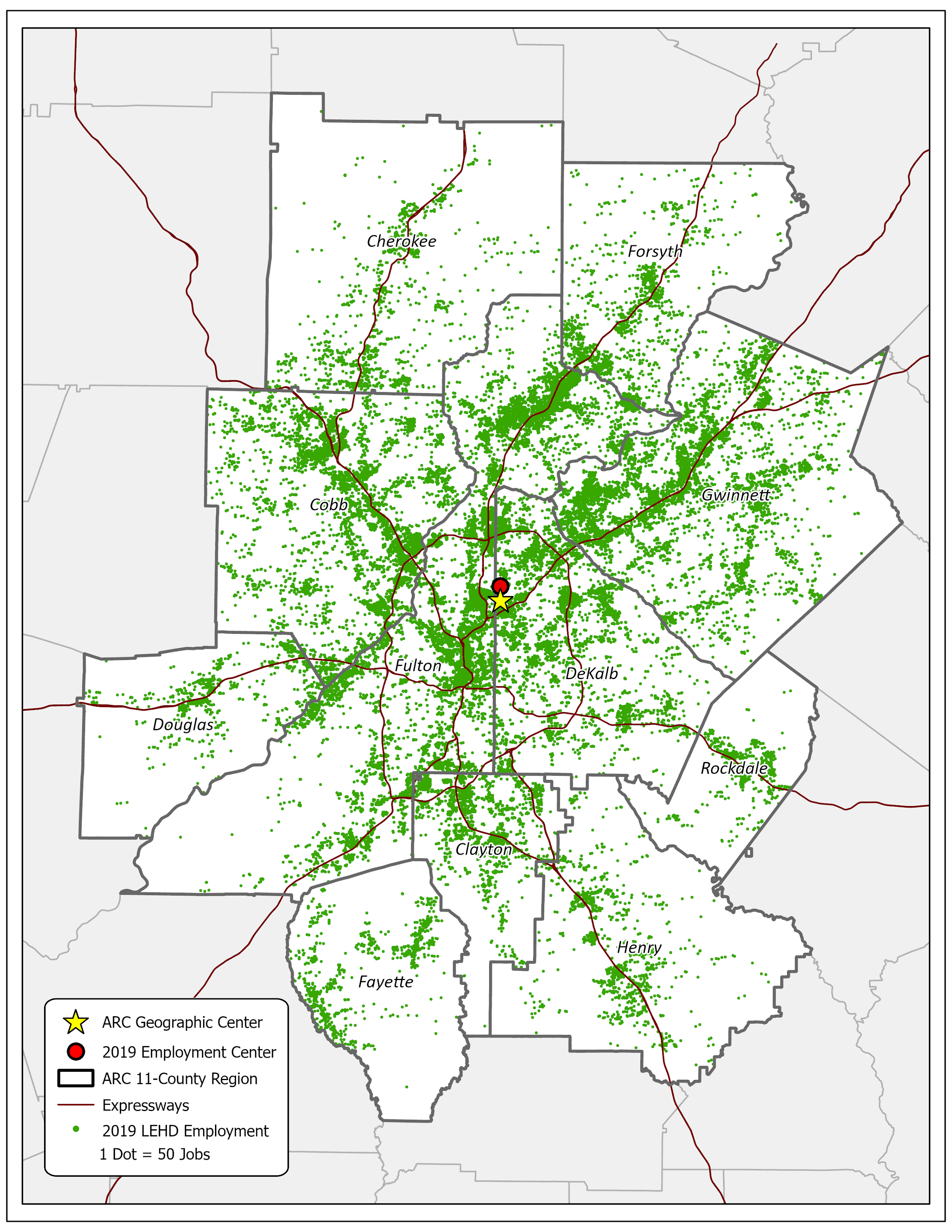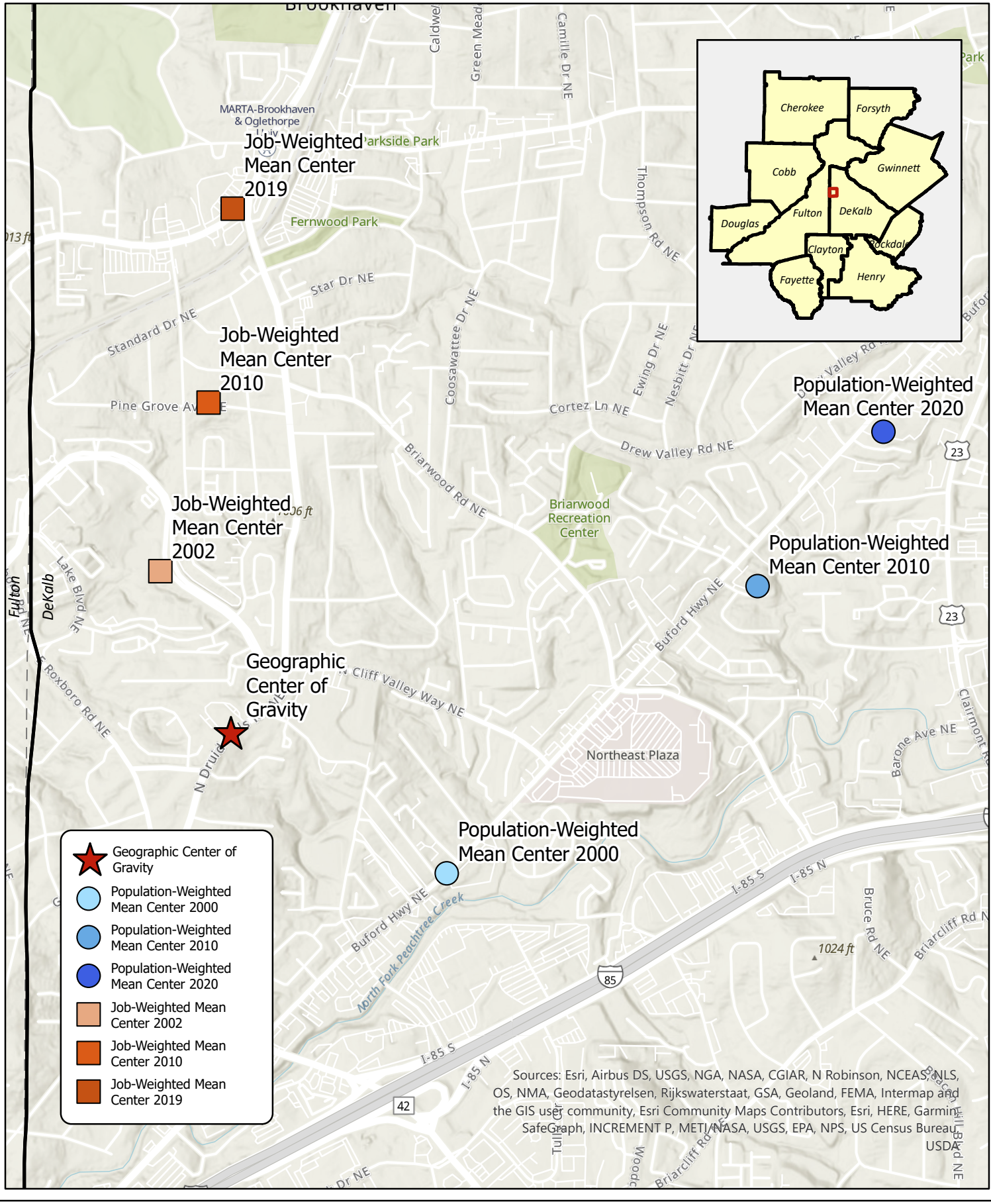In recent years, we have all heard a lot, maybe too much. about there being an increasingly small political center in this country . Don’t worry—we aren’t going to talk about that kind of center. This post looks at geographic centers: it takes its inspiration from fairly recent national stories about a much less controversial center: the spatial center of population in the 2020 Census–as well as related posts about the national pattern in which that center has shifted from 1790 to that 2020 point. As Map 1 below shows, we have most demonstrably “gone west” over time, but have been moving south in the last few decades along with a slowed drift west.
Map 1: The “Center” of United States Population: 1790-2020 (Source: Census Bureau)

But let’s do what this blog tries to do, and get more local! Census data for our 11-county region indicates that the “center” for our population is north of the geographic center of our 11-county region (see Map 2 below). This is the result of many decades of stronger growth to the north of I-20–though this imbalance is (as the westward drift for the nation) slowing a bit in recent years. Map 3 shows the corresponding location for jobs–and the 2020 ‘core point’ here is more central. Downtown and the City of Atlanta as a whole still has a large, if slowly declining, share of all jobs in our region.
Map 2: 2020 Population Center for ARC 11-County Region (Source: Census Bureau; ARC RAD)

Map 3: 2019 Employment Center for ARC 11-County Region (Source: GA Department of Labor (DoL); ARC RAD)

Map 4 illustrates the 11-county change in the centers (for population and jobs) over time. There is a northeastern drift in population, along and up the I-85 corridor. Employment is “centered” more than population by that relatively large share of office jobs in our downtown–but is moving north near the 400 corridor. A few more notable observations: (1) from 2002 to 2019, the jobs center is further north (and west) than the central point for population, and (2) the “job core” point has shifted slightly less, over time, than the population center point . But to conclude, in a region known for its geographic expansion (yes, you might say sprawl, historically :), we do have a center that seems to be “holding”.
Map 4: Comparing the Centers: Movements in the Last Decades (Source: Census Bureau; GA DoL; ARC RAD)


